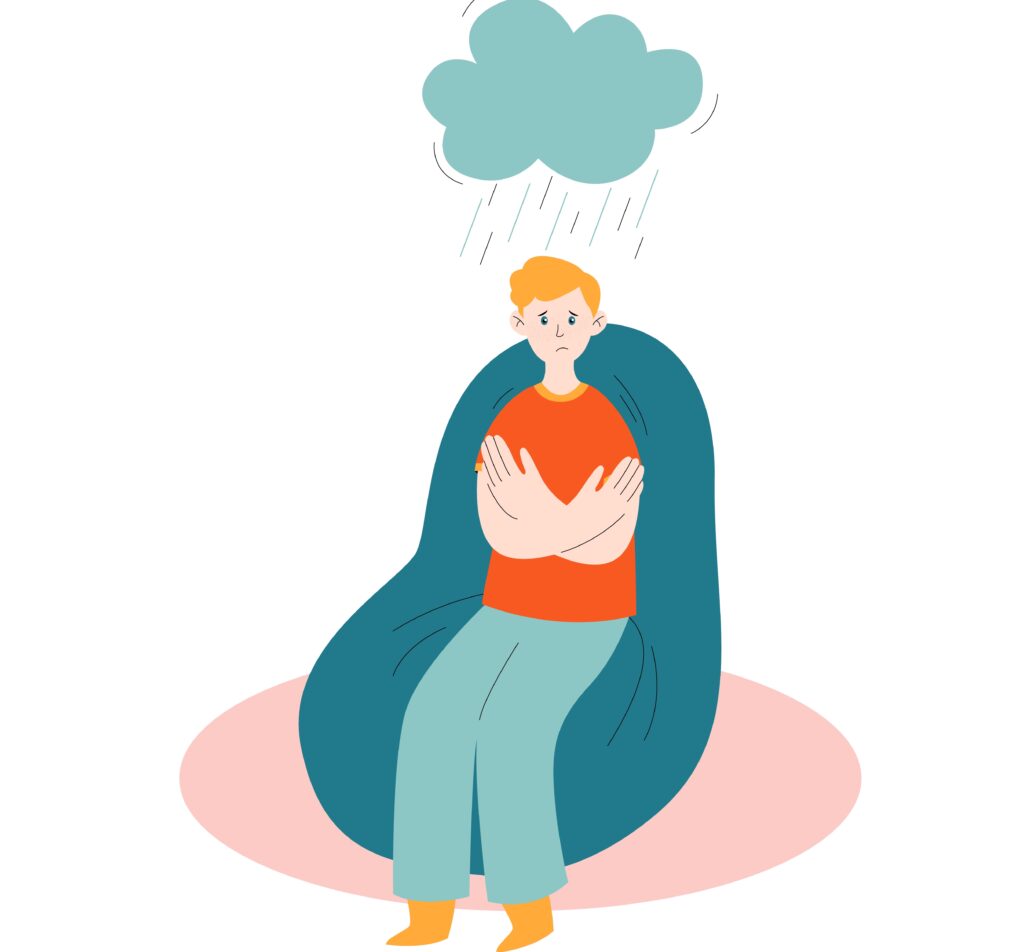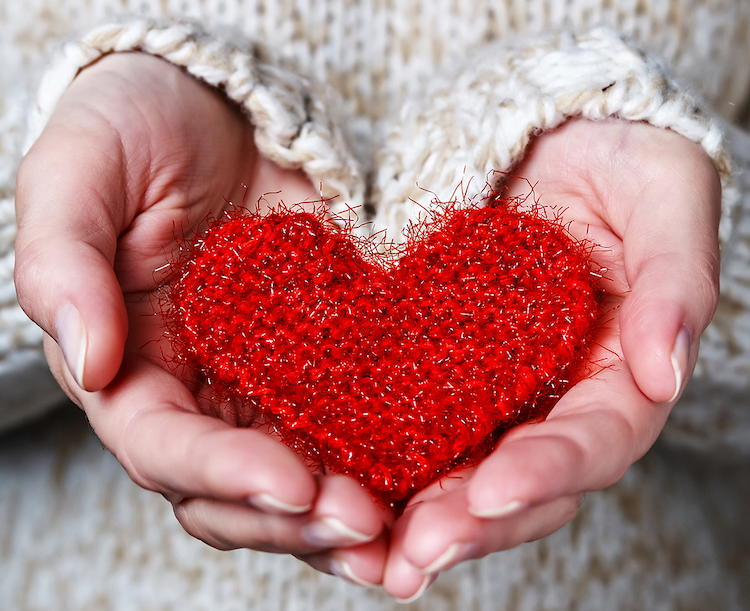Youth mental health concerns are at an all-time high, an aftereffect of COVID. But local support is out there. Here’s how to help your child navigate their mental well-being.

Don’t give up. That’s Holly Reid’s* simple but sage advice to parents and caregivers wading through their children’s mental health challenges. Reid is a single-by-choice mom to twins, age 13. Her son was diagnosed with inattentive attention-deficit/hyperactivity disorder (ADHD) and dyslexia at 9 years old, while her daughter was diagnosed with anxiety, also at age 9. “Concerns about my son started in first grade,” says Reid. “And it was an ongoing process identifying what the underlying issues were.” She says her twins’ pediatrician was originally dismissive of her son’s symptoms. She encountered long wait times for referrals and has spent countless hours researching, making appointments, adjusting their lifestyle and advocating for appropriate help for her son and daughter.
It’s easy to know if your kid is sick: a fever, that tell-tale cough, a constant runny nose. But it can often be trickier to identify if your child is experiencing mental health issues, and if so, what might be happening. One out of six children and youth in the U.S. (16.67%) has a diagnosable mental health condition, according to the Centers for Disease Control and Prevention (CDC). Youth are most commonly affected by depression and anxiety, but this also includes ADHD, substance abuse, eating disorders and learning disabilities. And predictably, COVID only magnified mental health concerns. In 2022, the KIDS COUNT National Report cited that 1.5 million more children are struggling with their mental health. And here in Oregon, 16% of youth, or 117,000 children, experienced depression or anxiety in the first year of the pandemic, an increase of 5.1%. That’s higher than the national average of 11.8% of children experiencing mental health concerns.
But as Reid’s family can attest, these thoughts, feelings and behaviors don’t usually resolve on their own. “Lockdown was hard for everyone, but it interrupted critical developmental stages in kids’ lives,” she says. “There shouldn’t be any stigma in getting kids the support they need as we emerge from the pandemic.”
While it can be a long journey on the road to healing, help is available: in person, throughout the community — including in schools — and online. Here’s what to look out for, how to be there for your child, and most importantly, where to find help.
What to Watch For
It’s one of every parent’s worst nightmares: suspecting your child is hurting, but not sure exactly from what or why. Poor mental health can not only affect kids, tweens and teens physically, but also negatively impact their ability to learn and succeed in school and influence their decision making. Untreated mental health issues can also lead to other risks for youth, including increased drug use, riskier sexual behaviors and violence.
Heather Adams, the director of pediatric psychiatry consult liaison services at Randall Children’s Hospital, says the Legacy hospital system throughout the Portland-area has not only witnessed an increase in the number of youth coming in, but also a shift in mental health concerns. She says there are now more youth coming through the emergency department for depression and anxiety. “COVID really changed the way that people connect to the community,” says Adams. “Remove that support and intervention through school, you also remove mental health intervention. Just because schools opened back up, doesn’t mean they just picked up where they should have picked up.”
To try and prevent a situation where your child is in crisis, and needing emergency care, Adams says one of the best first steps is the most straightforward: Have a conversation with your child. “Listen to them and see what they need,” she says.
“Parents tend to go into ‘fix it’ mode when they see their child struggling — it’s understandable — but the first step to coming up with a solution together is first by listening,” adds Hannah Acock, a licensed clinical social worker (LCSW) at Metropolitan Pediatrics.
Both Adams and Acock recommend observing and discussing with your child, and their pediatrician, any changes in your child’s emotions, actions and behaviors. This can be anything from physical changes like trouble sleeping or overeating, to behavioral shifts such as sudden outbursts, increased irritability or sadness, or withdrawing from friends and activities.
Adams says most of the patients coming into the Legacy hospital system are teenagers, followed by older middle-school-aged kids. At Metropolitan Pediatrics, which has six locations throughout the Portland area, Acock says their clinics are also seeing more female patients in need of mental health care, compared to their male peers. This aligns with national statistics. According to the CDC, in 2021, 57% of female youth reported experiencing prolonged feelings of hopelessness and sadness, while only 31% of male youth did. (Even more alarming, 63% of female youth experienced emotional abuse by a parent or caregiver during COVID-19, compared to 47% of male youth.)
“We are hopeful that regular screenings and continued conversation about the gender gap in mental health treatment will encourage and normalize male and other gender populations in receiving mental health care,” says Acock.
What to Do

Early diagnosis coupled with the appropriate treatment plan can make a huge difference in the lives of children experiencing mental health concerns (as well as impacting everyone in the household caused by any changes or disruptions).
Adams says to look to your community at the first possible sign of a change in your child’s mental well-being. This includes making an appointment for your child with their pediatrician, meeting with their teachers and the school counselor, and researching therapy options and making appointments. This can create a significant headway in avoiding an urgent visit to the ER.
At Metropolitan Pediatrics, Acock says all clinics have at least one behavioral health clinician, who offers same-day, crisis intervention, as well as therapy for patients, including those on waitlists to meet with therapists. She says all patients 11 years and older also receive specialized screenings for depression and anxiety. There are also screenings for suicidal ideation and suicidal behaviors.
“About 30% of all of our visits involve some type of mental health diagnosis, whether this is a preventative-care visit or a problem-focused visit,” she says. “This has definitely increased over the past few years, especially with the pandemic. The other thing that has significantly changed is the level of stress and mental health challenges that the parents are reporting.”
Like many of Acock’s patients, Reid’s children also suffered mental health setbacks during the pandemic. Both twins met with therapists online during the pandemic, and Reid’s son is continuing with therapy in person. “I am a big believer in therapy,” she says. “It has made a big difference in my life, and I feel strongly in getting my kids the support they need when they need it.”
During lockdown, Reid’s son experienced rapid cycling laughing until crying that he couldn’t control. He also later had an eating disorder in which he hoarded and over-ate in the middle of the night. “Our pediatrician was pretty dismissive of my concerns at the time. When I contacted the behavioral health practice connected to our pediatric practice where my son had been seen previously, they had an eight month waitlist to be seen, but gave me the names of other practices where the waiting list was shorter.” She says constant vigilance, communication and advocacy got her son the help she knew he needed. “Push for help, and do not stop advocating for your kid’s needs when you encounter obstacles or those who are dismissive of their concerns. You know your child best.”
How to Nurture Your Child’s Mental Health
Just as you nurture your children physically by making healthy meals, encouraging regular exercise and staying on top of annual wellness checks, parents can equally support good mental health. Adams says a great first step is creating a positive and safe home environment, and listening to, and respecting, their feelings.
Acock also recommends that parents identify trusted adults in their child’s life. For example, school counselors. “It can also be helpful to have the child meet the school counselor early on so that when they need support, rapport is established,” she says.
Spend time together as a family perusing websites, listening to podcasts, watching YouTube channels or reading books — memoirs are great reads that engage kids — that discuss mental health in a positive way.
For Reid’s twins, it was about ensuring they got the care they needed, not only including regular therapy and appointments with their pediatrician, but by also establishing and maintaining healthy habits. She enrolled her son into regular, specialized tutoring. To help with his disordered eating, Reid says she started stocking the kitchen with healthier snacks. And when her daughter’s anxiety flared, she got a weighted blanket, a sound machine, ashwagandha tea and fidget jewelry to help ease the anxiety, and help her sleep better. Reid says she also has taken online courses which gave her tangible strategies for her children.
She says what’s most important is to approach mental health without shame. “We talk about mental health in the same ways we talk about physical health,” says Reid. “There is no shame in needing support.”
* Holly Reid is a pseudonym to protect the privacy of this Portland mom and her children.

Helping Identify the Problem
How do you know if your child might be struggling emotionally and mentally? Here are some key changes to look out for:
Changes in thinking. Trouble concentrating; changes in their performance at school; frequently saying negative things or having negative thoughts about themselves.
Changes in feelings. Reacting bigger or differently than the situation calls for; unhappiness, worry, irritability or anger; or feeling helpless or hopeless.
Changes in behavior. Showing little interest or withdrawing from activities — or friends — they normally enjoy; wanting to be alone more often; sudden outbursts of anger or tears; or less energetic than normal.
Physical changes. Trouble sleeping; eating too much or too little; nervous habits such as thumb sucking, nail biting or hair twisting; headaches, stomachaches, or general aches and pains.
Source: Canadian Pediatric Society
Resources to the Rescue
When your family is in the throes of a crisis, it can be understandably hard to think straight. Here are local and national resources to help your child get appropriate treatment.

Oregon Crisis Contacts
Oregon Youth Line: 1-877-968-8491; text: teen2teen to 839863
Oregon Suicide LifeLine: 1-800-273-8255; text: 988
Crisis Resolution Center for Souther Oregon: 1-541-474-5360
National Resources
National Alliance on Mental Illness (NAMI): 1-800-343-6264
Substance Abuse and Mental Health Services Administration (SAMHSA)
Portland and Oregon Organizations
These local organizations offer pediatric crisis support, residential treatment and outpatient services and programs:
Safe Oregon
Lines for Life
Youth Era
Trillium Family Services
Morrison Child & Family Services
Albertina Kerr
Where to Find Treatment
These national resources can help in the search to find the right therapist for your child:
American Psychological Association psychologist locator
American Academy of Child and Adolescent Psychiatry psychiatrist locator
Association for Behavioral and Cognitive Therapies therapist locator
- Top 5 Places to Learn about Black History in Portland - February 20, 2024
- New Asian Restaurants for the Whole Family - January 25, 2024
- Top 5 Holiday Toy Drives - December 4, 2023





